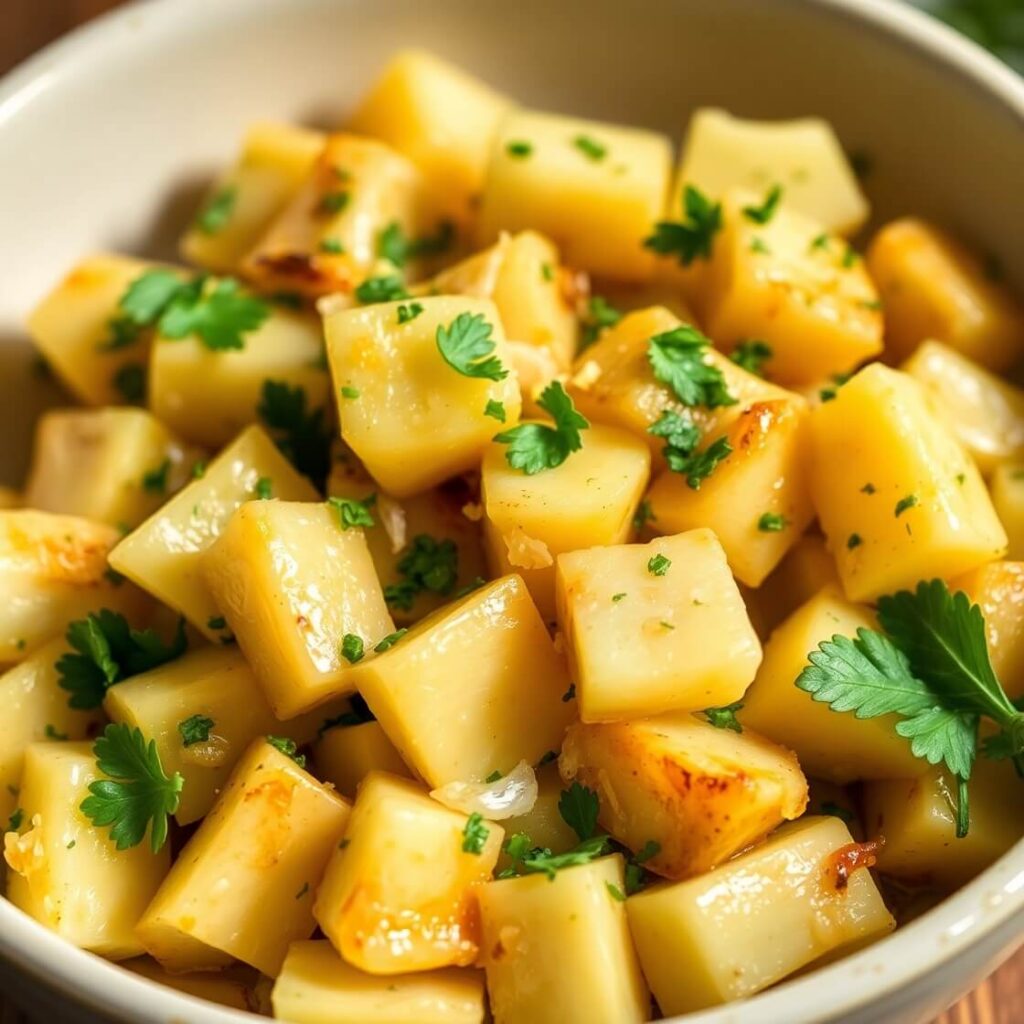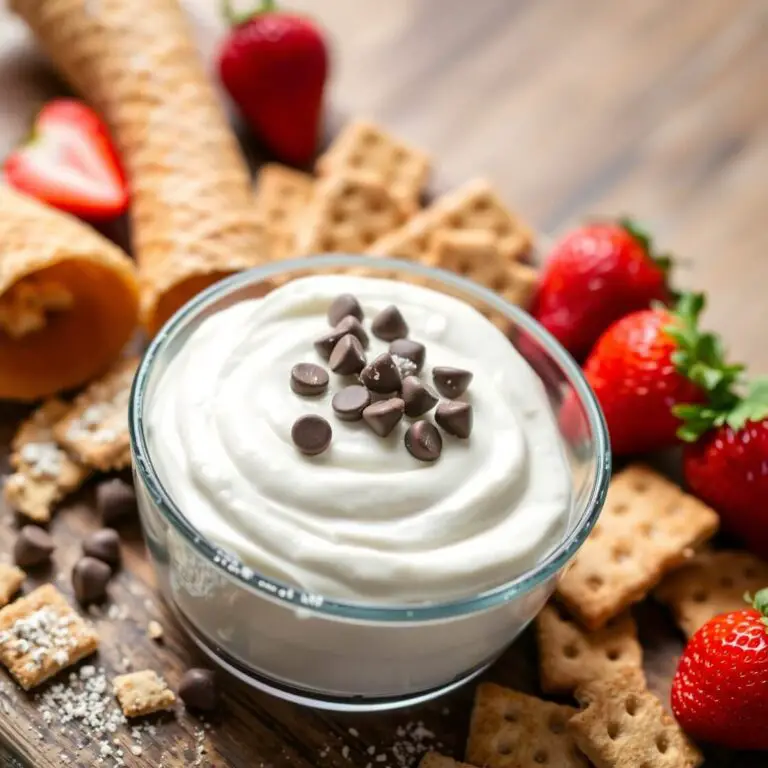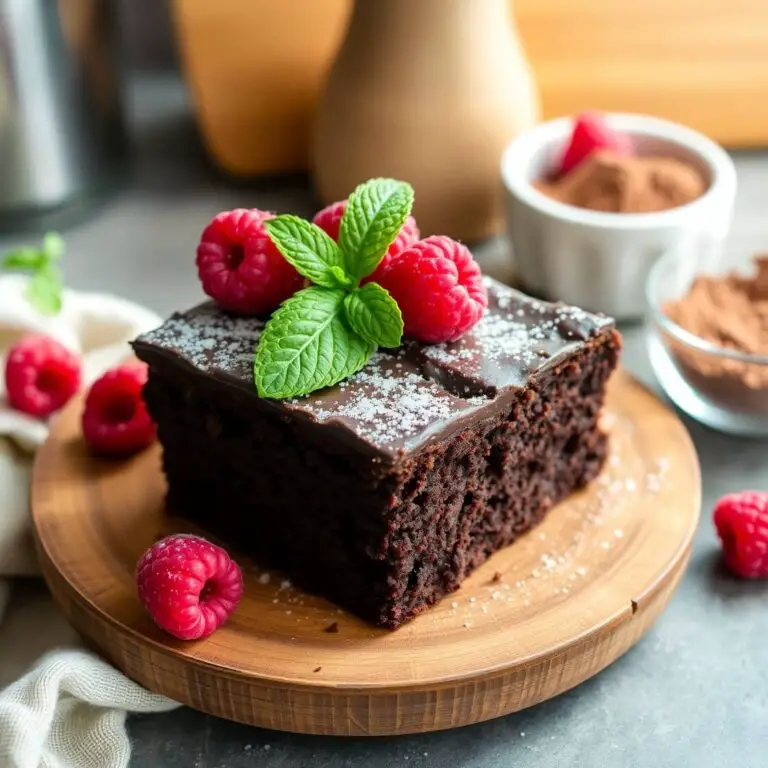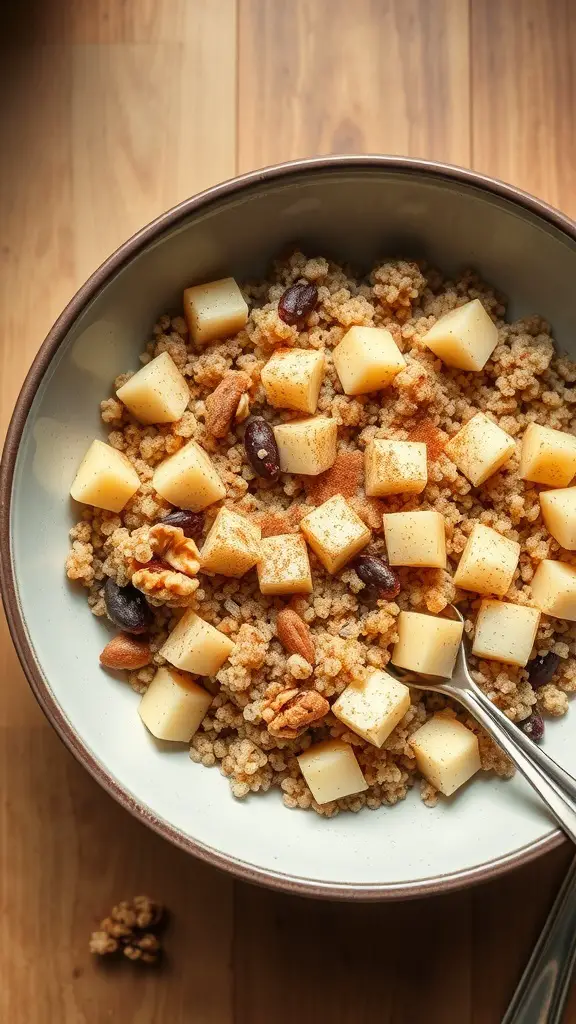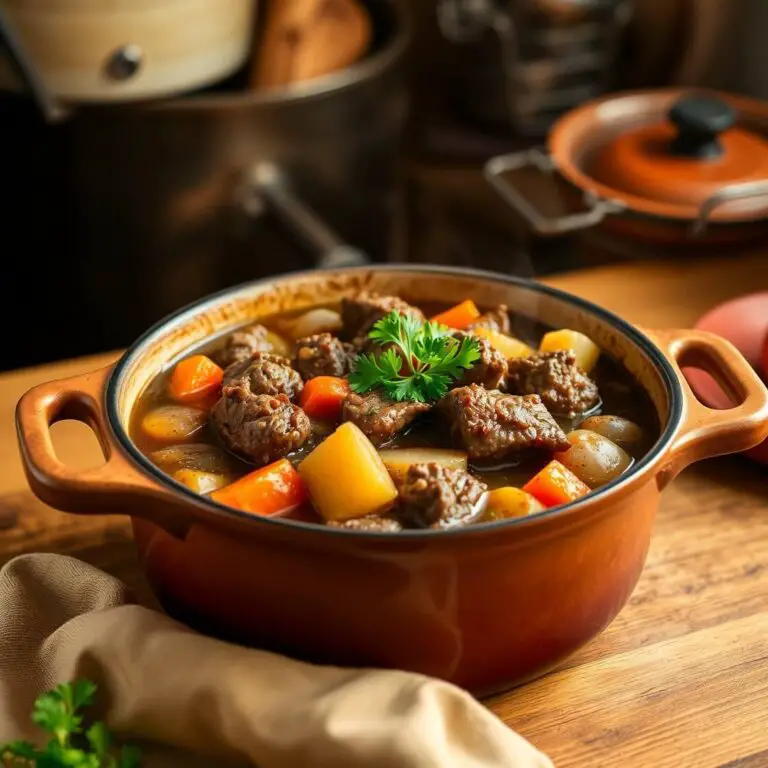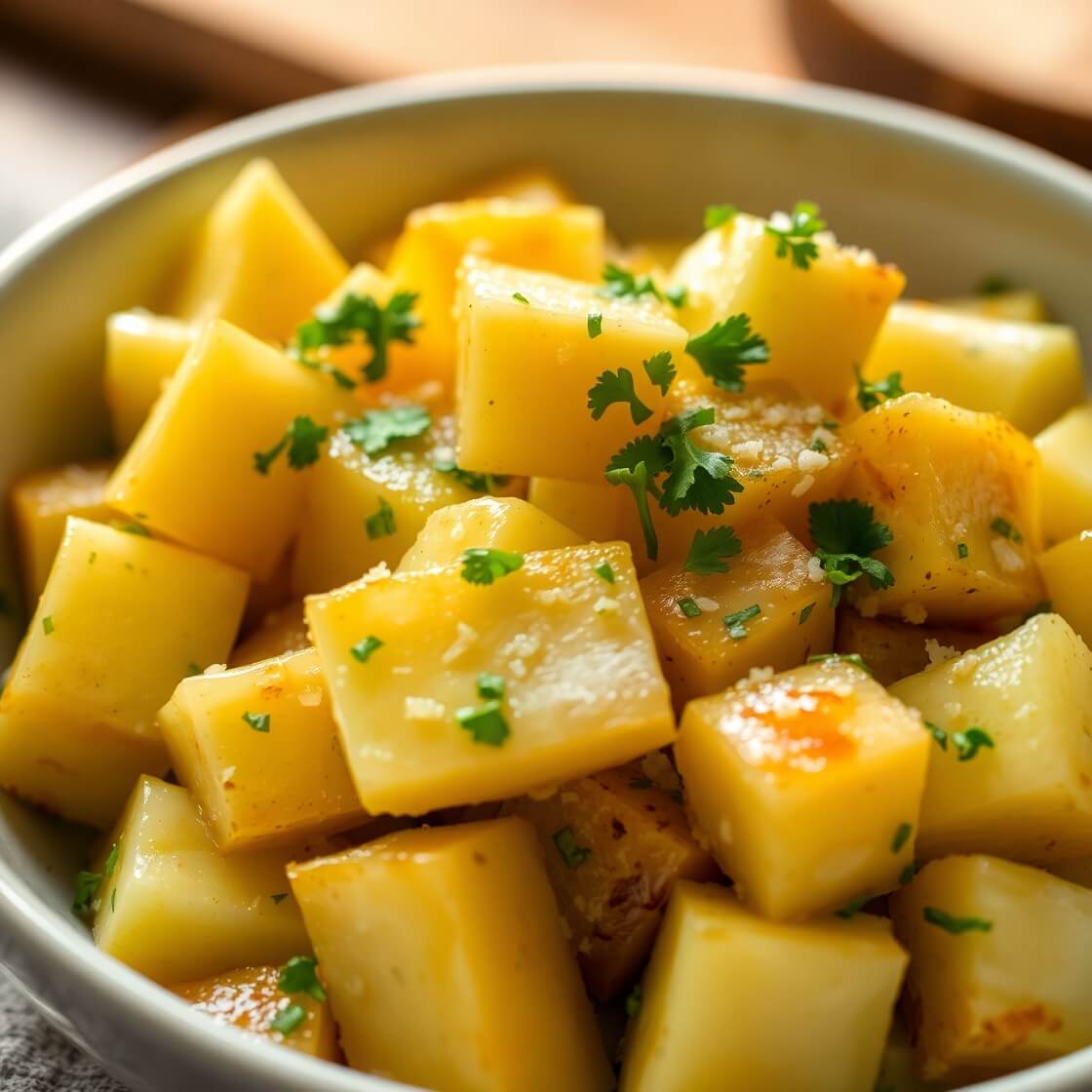
When I first came across kohlrabi at the local farmer’s market, I’ll admit—I had no idea what it was. It looked like a space vegetable, with its green bulb and odd sprouting stalks. But something about it intrigued me. I bought one, took it home, and began experimenting. The result? A whole collection of incredibly simple, flavor-packed kohlrabi recipes that are now a regular part of my kitchen rotation.
If you’ve ever walked past kohlrabi in the grocery store or gotten it in your CSA box and didn’t know what to do with it—this recipe is for you. You’re not alone! I’m here to help you transform this quirky vegetable into something truly delicious. Whether you’re roasting, sautéing, or eating it raw, kohlrabi is versatile, healthy, and surprisingly easy to fall in love with.
Why I Love This Recipe
Kohlrabi is one of those underrated vegetables that deserves way more attention. It’s part of the brassica family (just like cabbage, broccoli, and kale), but it offers something a little different—a refreshing crunch, a mild, sweet flavor, and a texture that’s similar to a cross between a radish and an apple.
I love this recipe because it showcases kohlrabi in a way that’s approachable for everyone, even if you’ve never tried it before. It’s light enough to serve as a side dish or snack, yet satisfying enough to stand on its own with the right pairing.
The real beauty of this dish lies in its flexibility. Roast it for a caramelized depth of flavor, shred it raw into salads for a crispy crunch, or sauté it with a touch of garlic and olive oil for a quick weeknight side. It can handle bold seasonings, fresh herbs, and even creamy dressings—making it a true chameleon in the kitchen.
Plus, it’s packed with nutrients. Low in calories and high in fiber, vitamin C, and potassium, this recipe isn’t just tasty—it’s smart food. When I want to eat clean but still enjoy every bite, kohlrabi always comes through.
Ingredients for Kohlrabi Recipe
Before you start, let me assure you—this recipe won’t send you on a wild goose chase for hard-to-find ingredients. In fact, many of them are likely already in your pantry.
The star, of course, is fresh kohlrabi. Look for firm bulbs with unblemished skin and fresh-looking leaves if they’re still attached. Smaller bulbs tend to be more tender and less woody.
Here’s what you’ll need to make a simple sautéed kohlrabi dish (my go-to method for beginners):
- 3 medium kohlrabi bulbs, peeled and sliced into matchsticks or cubes
- 2 tablespoons olive oil (or butter for a richer flavor)
- 2 cloves garlic, minced
- Salt and black pepper, to taste
- 1 teaspoon lemon zest (optional, for brightness)
- 1 tablespoon chopped fresh parsley or dill (optional)
This is a base recipe, and you can easily riff on it by adding onions, carrots, or even a sprinkle of Parmesan or feta for extra richness. If you’re feeling bold, a dash of crushed red pepper flakes adds a gentle heat that pairs beautifully with the kohlrabi’s sweet, mild flavor.
How Much Time Will You Need
This is one of those magical recipes that doesn’t require you to block out half your day.
- Prep time: 10 minutes
- Cook time: 15 minutes
- Total time: 25 minutes
If you’re shredding the kohlrabi for a salad or slaw, the cook time is zero—just prep and serve! But for this warm, comforting version, you’re looking at less than half an hour from start to finish. It’s ideal for busy weeknights or lazy Sunday brunches.
How to Make This Kohlrabi Recipe
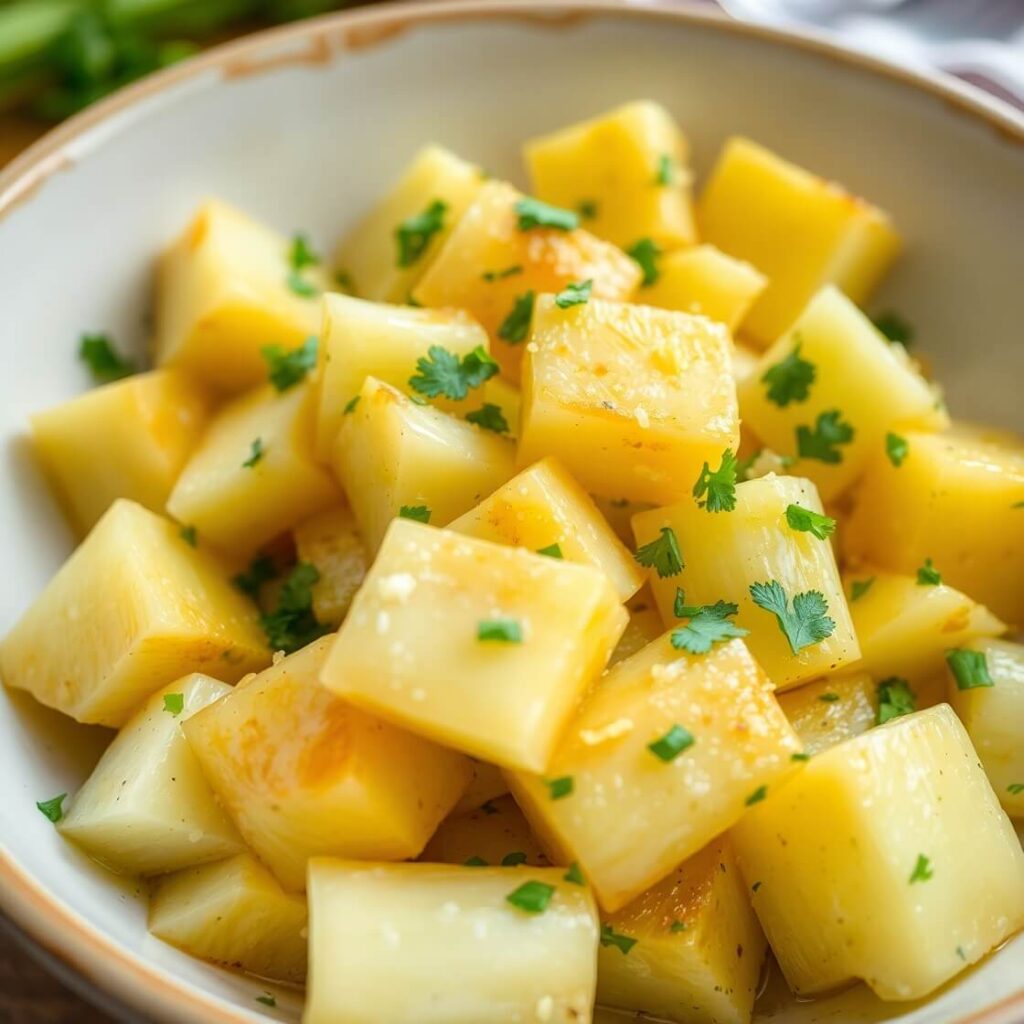
If you’ve never prepped kohlrabi before, don’t worry—it’s easier than it looks. The thick skin can be a bit tough, but once you get past that, you’re golden.
Step – 1: Peel and Cut the Kohlrabi
Start by trimming off the leaves and stems (you can save the greens to sauté or use in soups—they’re edible too!). Using a sharp knife or vegetable peeler, remove the tough outer layer of the kohlrabi bulb. You’ll want to peel down until you hit the pale, tender interior.
Cut the peeled kohlrabi into matchsticks, cubes, or thin slices, depending on your preference. For this sautéed version, I like small cubes for even cooking.
Step – 2: Sauté the Aromatics
Heat olive oil in a large skillet over medium heat. Once it’s shimmering, add the minced garlic and sauté for about 30 seconds, just until fragrant. Be careful not to burn the garlic—it turns bitter quickly.
Step – 3: Cook the Kohlrabi
Add the chopped kohlrabi to the skillet and stir to coat with the garlic and oil. Season with salt and pepper. Let it cook, stirring occasionally, for about 10 to 12 minutes. You’re looking for golden edges and a fork-tender texture, similar to sautéed potatoes.
Step – 4: Brighten and Finish
Right before you turn off the heat, stir in the lemon zest and fresh herbs. This gives the dish a fresh lift that balances the earthy flavor of the kohlrabi. Taste and adjust the seasoning if needed.
Step – 5: Serve Warm or at Room Temperature
This dish is incredibly flexible. Serve it hot as a side, or let it cool and add it to grain bowls or lunch prep containers. It holds up beautifully either way.
Substitutions
Not everyone has the same pantry, and that’s totally fine. This recipe is built to adapt.
If you don’t have kohlrabi on hand, you can use:
- Turnips – slightly sharper flavor, but similar texture.
- Broccoli stems – a great way to reduce waste; just peel and slice.
- Jicama – especially for raw recipes; offers that crisp crunch.
- Celeriac (celery root) – richer flavor and a great swap when roasting.
No garlic? Try shallots or even onion powder. Out of lemon zest? A splash of vinegar at the end works wonders.
Want to make it creamy? A spoonful of crème fraîche or Greek yogurt stirred in at the end gives it a velvety finish that’s irresistible.
Best Side Dishes for Kohlrabi Recipe
Pairing this recipe with the right sides can turn it into a complete meal. Here are a few ideas I love:
- Grilled Lemon Herb Chicken – The freshness of the lemon and herbs complement the mild flavor of kohlrabi.
- Quinoa Salad with Roasted Vegetables – A healthy and hearty combo for lunch or dinner.
- Baked Salmon with Dill Yogurt Sauce – Adds richness and balance, making it a well-rounded plate.
Serving and Presentation Tips
When it comes to serving kohlrabi, presentation can really elevate this humble vegetable into something special that feels both fresh and inviting. One of my favorite ways is to serve the sautéed kohlrabi warm in a shallow bowl, garnished with a sprinkle of freshly chopped herbs like parsley or dill. This adds a lovely pop of color and freshness.
If you want to make the dish more visually appealing, try layering it over a bed of lightly dressed mixed greens or alongside a colorful quinoa salad. A drizzle of good-quality olive oil or a squeeze of lemon just before serving brings everything to life.
For a bit of texture contrast, sprinkle toasted nuts or seeds like sliced almonds or pumpkin seeds on top. It adds a delightful crunch and subtle nuttiness that pairs beautifully with the soft, tender kohlrabi.
Lastly, serving this alongside vibrant sides—think roasted beets or glazed carrots—creates a visually appealing plate that makes any meal feel thoughtfully prepared.
Tips and Tricks to Make This Recipe Even Better
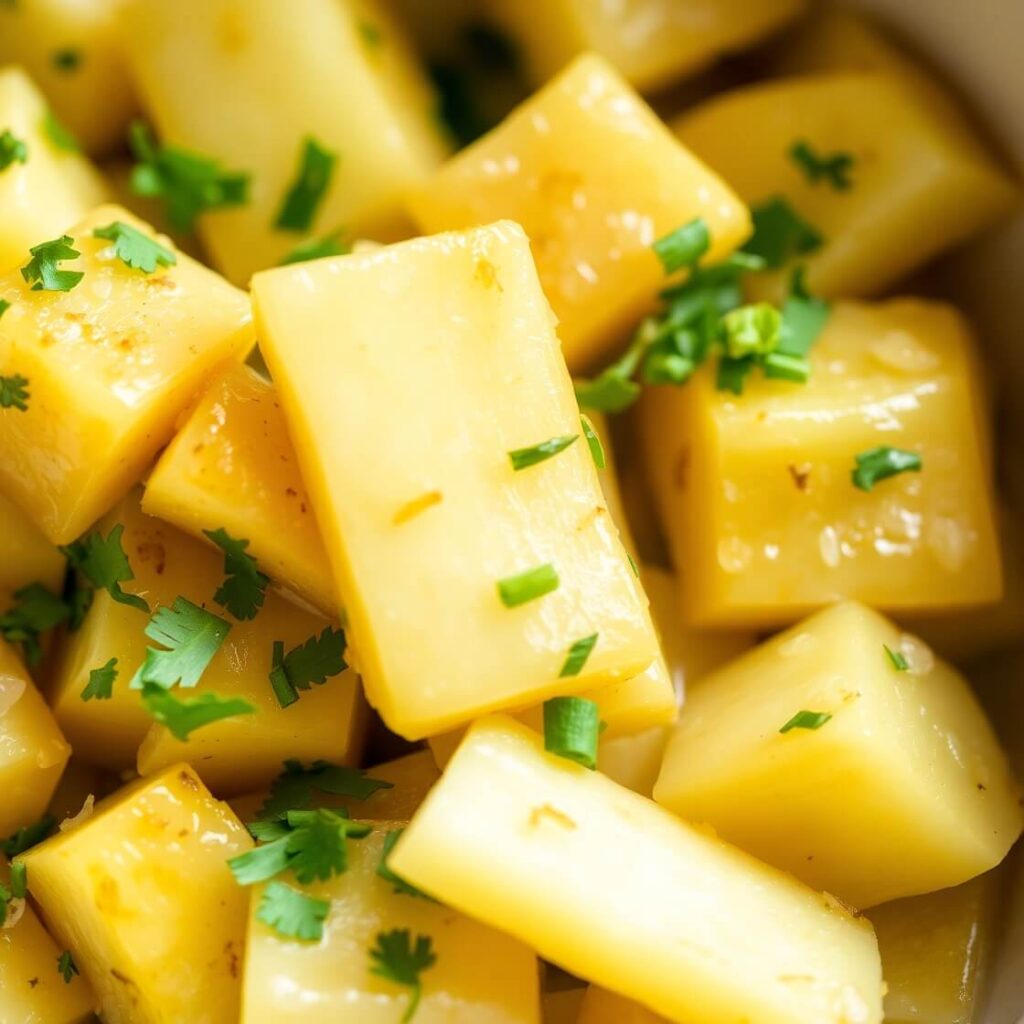
To get the best results with kohlrabi, here are some of my top tips that have transformed this recipe from simple to spectacular:
- Choose fresh kohlrabi bulbs: Smaller bulbs tend to be sweeter and more tender. Avoid any with soft spots or wrinkles.
- Peel thoroughly: The skin can be tough and fibrous, so make sure to peel all the way down to the pale interior.
- Cut uniformly: Whether you choose cubes, sticks, or slices, try to keep them the same size for even cooking.
- Don’t rush the sauté: Cooking slowly over medium heat allows natural sugars to develop, creating a caramelized, nutty flavor.
- Add fresh herbs at the end: This keeps their brightness and prevents them from wilting or turning bitter.
- Use lemon zest instead of juice: Zest adds flavor without watering down the dish.
- Experiment with spices: Ground cumin, smoked paprika, or even a pinch of curry powder can add exciting layers of flavor.
- Try roasting for a different texture: Toss kohlrabi with olive oil, salt, and pepper, then roast at 425°F for 20–25 minutes until golden and tender.
Common Mistakes to Avoid
Even with a straightforward recipe, some common pitfalls can trip you up. Here’s what to watch out for:
- Skipping the peel: Kohlrabi skin is fibrous and tough, which can ruin the texture if not removed completely.
- Cutting uneven pieces: This leads to inconsistent cooking—some pieces will burn while others stay raw.
- Using too high heat: Cooking on too high a flame can burn the garlic and oil before the kohlrabi softens.
- Overcooking: While you want tenderness, overcooked kohlrabi becomes mushy and loses its pleasant crunch.
- Forgetting to season: Kohlrabi’s mild flavor needs salt and pepper to shine—don’t skimp on seasoning!
How to Store It
If you want to enjoy this recipe later or have leftovers, proper storage is key.
- Refrigeration: Place cooled kohlrabi in an airtight container. It will keep fresh for up to 4 days.
- Reheating: Reheat gently in a skillet over medium heat to avoid drying it out. Adding a splash of water or olive oil helps retain moisture.
- Freezing: Cooked kohlrabi doesn’t freeze well due to its high water content—it can become mushy when thawed. It’s best to enjoy it fresh or refrigerated.
- Storing raw kohlrabi: Keep unpeeled bulbs in a perforated plastic bag in the fridge’s crisper drawer. They last up to 2 weeks when stored properly.
Frequently Asked Questions
Can I eat kohlrabi raw?
Absolutely! Kohlrabi is crunchy and mildly sweet raw. Slice it thinly or shred it into salads and slaws for a refreshing bite.
Is kohlrabi keto-friendly?
Yes, kohlrabi is low in carbohydrates and works well in keto and low-carb diets.
Can I substitute kohlrabi with another vegetable?
Turnips, jicama, or celery root can work as substitutes, though the flavor and texture will vary slightly.
Are the leaves edible?
Yes, kohlrabi greens are nutritious and delicious. Treat them like kale or collards—sauté or add to soups.
How do I know when kohlrabi is fresh?
Choose bulbs that are firm, smooth, and free of cracks or soft spots. Leaves should look vibrant and not wilted.

Kohlrabi Recipes
- Total Time: 25 minutes
- Yield: 4 1x
- Diet: Gluten Free
Description
This simple sautéed kohlrabi recipe transforms the humble bulb into a deliciously tender and flavorful side dish. Lightly caramelized and infused with garlic and fresh herbs, it offers a delicate sweetness and satisfying crunch. Perfect for a quick weeknight meal or as an elegant accompaniment to your favorite protein, this dish is as healthy as it is versatile. It’s gluten-free, vegetarian, and naturally low in calories, making it a smart choice for any diet.
Ingredients
- 3 medium kohlrabi bulbs, peeled and cubed
- 2 tablespoons olive oil
- 2 cloves garlic, minced
- Salt and black pepper, to taste
- 1 teaspoon lemon zest (optional)
- 1 tablespoon fresh parsley or dill, chopped (optional)
Instructions
- Heat olive oil in a skillet over medium heat.
- Add minced garlic and sauté for 30 seconds until fragrant.
- Add kohlrabi cubes, season with salt and pepper, and cook for 10-12 minutes, stirring occasionally, until tender and lightly golden.
- Stir in lemon zest and fresh herbs, adjust seasoning, and serve warm or at room temperature.
Notes
- Peel kohlrabi thoroughly to remove the tough outer layer.
- Uniform cutting ensures even cooking.
- For a richer flavor, substitute butter for olive oil.
- Add a pinch of chili flakes for a spicy kick.
- Prep Time: 10 minutes
- Cook Time: 15 minutes
- Category: Side dish
- Method: Sautéing
- Cuisine: American / Contemporary
Nutrition
- Serving Size: 4
- Calories: 110
- Sugar: 4g
- Sodium: 120mg
- Fat: 7g
- Saturated Fat: 1g
- Unsaturated Fat: 6g
- Trans Fat: 0g
- Carbohydrates: 10g
- Fiber: 4g
- Protein: 2g
- Cholesterol: 0mg

